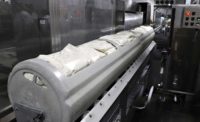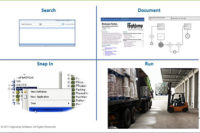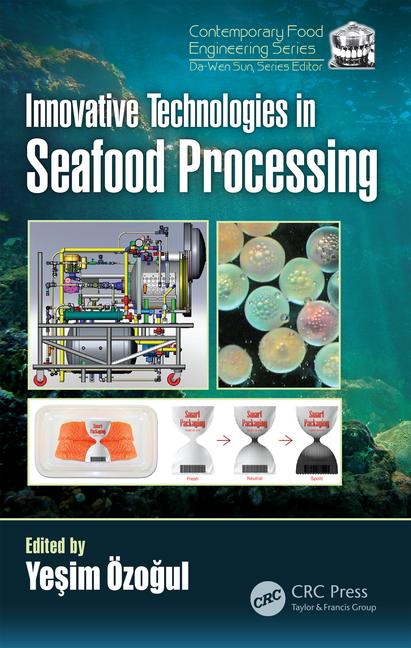In It for the Long Haul

BNSF’s refrigerated boxcars provide food-grade transit for products needing minimal protection from freezing/overheating.


Union Pacific’s $3.6 billion capital investment plan for 2012 includes rail capacity expansion, technology upgrades and purchasing 200 new locomotives.



In this article, you'll learn about ...
● The modes of transportation that refrigerated and frozen foods require
● Some initiatives that providers are taking to ensure that products arrive safely
Often times, consumers don’t care how a product gets from Point A to Point B; it just matters that it’s there, at their fingertips, when they need it.
But, for the folks behind the scenes, how items move from one point to another is crucial. Whether it be by boxcar, rail service or motor carrier, refrigerated and frozen foods require the right temperature in the right amount of time before they can be deemed unsellable.
That’s why many of today’s freight transportation providers are exercising some strategic moves to become the complete cold supply chain solution.
You’ve got rail
“The economics of boxcar rail provides shippers with transportation savings, additional transportation capacity, a major reduction in carbon emissions and great market penetration,” says Dwight Price, director of sales and marketing for Cryo-Trans, Inc., Owings Mills, Md. “More shippers are using carload rail to become more innovative and diversified in their supply chains.”
Rail also allows customers to receive just-in-time delivery.
“Our expedited services allows our customers more inventory turns, fresher product and the option for just-in-time delivery by utilizing our facilities as forward distribution and/or cross docking unit,” says Steve Poindexter, director of business trade development/national accounts for Railex, LLC, Delano, Calif. “We see many of our customers taking advantage of our speed of service, thus taking pressure off of their production and warehousing, allowing them to better service their customers.”
Other trends involving temperature-controlled boxcars are the growth in core commodities, says John Philp, assistant vice president, food and refrigerated products for Union Pacific, Omaha, Neb.
“Potatoes, onions and other durable produce long have been core commodities that we serve well from production centers to population centers,” he adds. “We are also experiencing renewed interest and expansion in shipping more frozen protein, other types of produce and some consumer packaged refreshments within our network.”
Furthermore, the demand for refrigerated boxcars continues to increase significantly.
“The insulated boxcar service, ideal for many beverages, provides food-grade transit for products needing minimal protection from freezing/overheating,” says Jonathan Tinker, railway director, marketing, industrial products for BNSF Railway, Fort Worth, Texas. “The refrigerated boxcars can maintain specific temperature requirements [and are] monitored remotely via satellite 24 hours per day.”
Improving intermodal
While the demand for temperature-controlled railcars continues to rise, freight transportation providers like BNSF Railway also continue to see more carriers using intermodal services.
“In fact, we have recently seen a few carriers invest in new 53-foot refrigerated containers,” says Gregg Zody, railway director, marketing and sales for consumer products for the Fort Worth, Texas, company. “Like many businesses, technology continues to drive change. Everything from cranes to locomotives to train control systems continues to improve in their efficiency as technology improves. BNSF is investing $3.9 billion into our network in 2012. This is to support existing infrastructure as well as invest in the growth of our network, including track, equipment and locomotives.”
Furthermore, preliminary data suggests that U.S. rail intermodal volume in 2012 will be the highest on record, according to Holly Arthur, assistant vice president of media and public relations for the Association of American Railroads (AAR), Washington, D.C.
“Today, U.S. rail intermodal traffic is roughly 55% international traffic (exports and imports) and 45% domestic traffic, with the latter on the rise in recent years, as railroads have been able to win intermodal market share from trucks,” she adds.
Case in point—freight transportation providers are in it for the long haul, as rail and intermodal trends continue to alter—and improve—the way refrigerated and frozen food processors transport product from point A to point B.
WHAT CAN THE GOVERNMENT DO FOR YOU?
It’s election year, and the freight transportation industry wants in on the action.
But, regardless of which party controls the White House, it’s unanimous that “the U.S. government needs to continue to invest in, repair and upgrade the national transportation infrastructure for the good of the national economy,” says Dwight Price, director of sales and marketing for Cryo-Trans, Inc., Owings Mills, Md.
Freight rail is a tremendous American success story, no matter the political party, says Holly Arthur, assistant vice president of media and public relations for the Association of American Railroads (AAR), Washington, D.C.
“Freight railroads every year invest tens of billions in the nationwide rail network that moves both people and goods, using private dollars,” she adds. And,
| “Railroads are hiring. We are an industry facing a significant wave of retirements, and as such have more than 15,000 jobs to fill in 2012 alone.” |
“railroads are hiring. We are an industry facing a significant wave of retirements, and as such have more than 15,000 jobs to fill in 2012 alone.”
Since 2000, Union Pacific has invested more than $31 billion in America’s transportation infrastructure, so that taxpayers don’t have to, according to John Philp, assistant vice president, food and refrigerated products for the Omaha, Neb.-based company.
“To maintain that level or investment,” he adds, “it is important for legislators to not impose additional regulations on our industry, especially ones that would cap our ability to earn a profit.”
Other freight transportation providers, like Railex, LLC, forged ahead on a quest to becoming carbon neutral.
“In just the short time Railex has been operating, we’ve saved 46 million gallons of fuel (compared to over the road), reduced 1 million metric tons of carbon from the environment and reduced over-the-road trucks by 210,000 trips, thus causing less damage to our roads and making them safer due to less congestion,” says Steve Poindexter, director of business trade development/national accounts for the Delano, Calif., service provider.
At the end of the day though, the United States needs to retain its competitive advantage in supply chain infrastructure, according to BNSF Railway.
“In order to do this, we need to focus on a national freight mobility strategy. We would also like to see them reform our project permitting process. The current process takes too long [sometimes up to two years], costs too much and could yield better environmental results, if it were reformed,” the Fort Worth, Texas, company says.
Looking for a reprint of this article?
From high-res PDFs to custom plaques, order your copy today!












